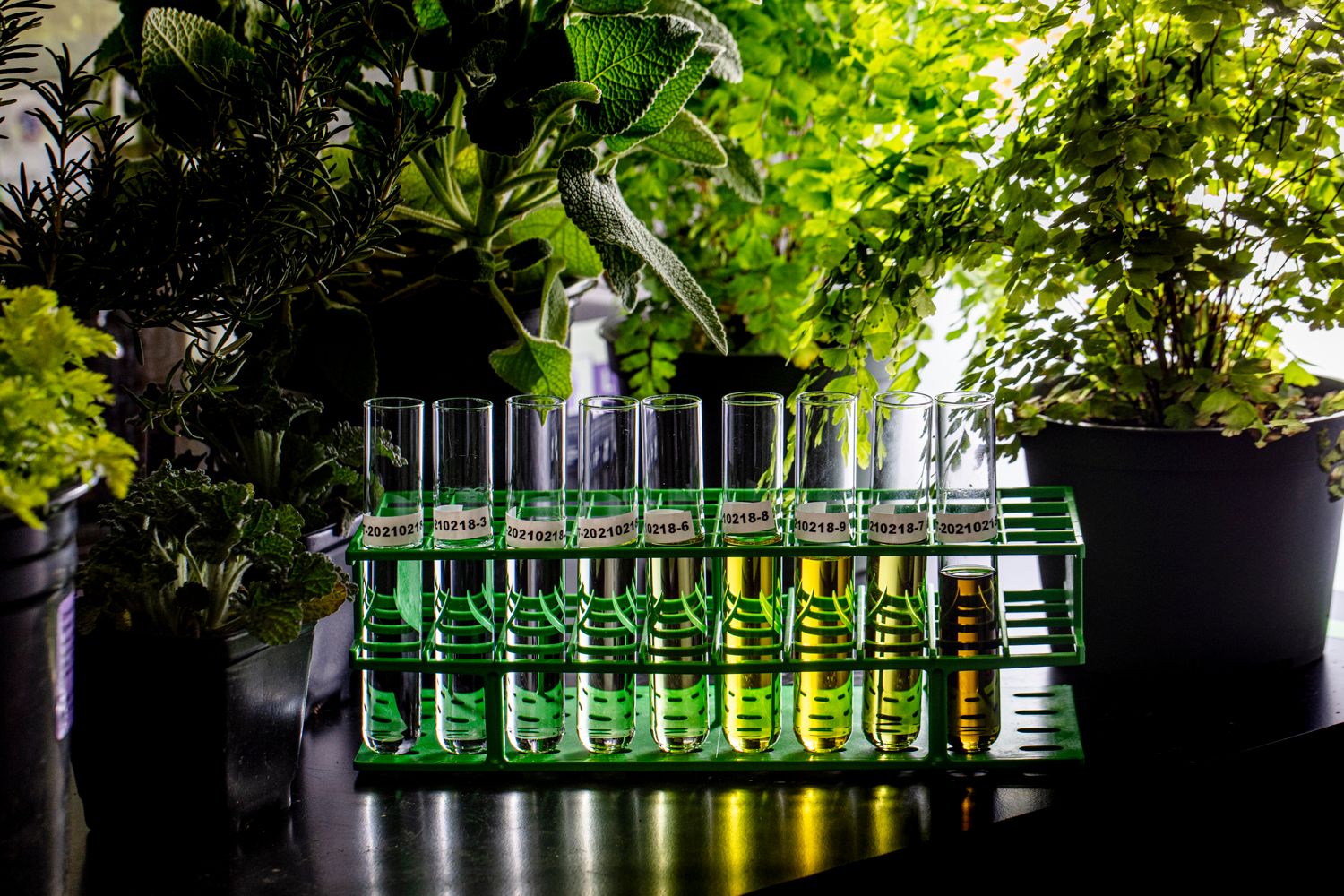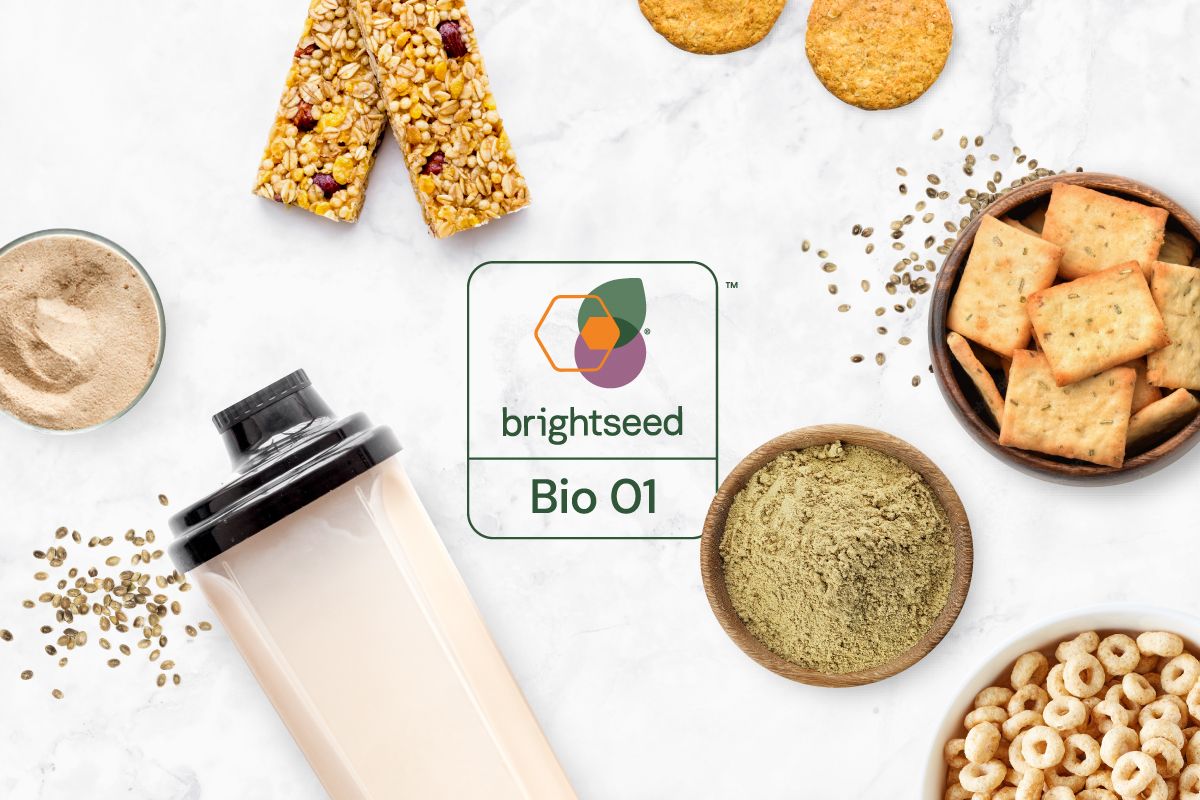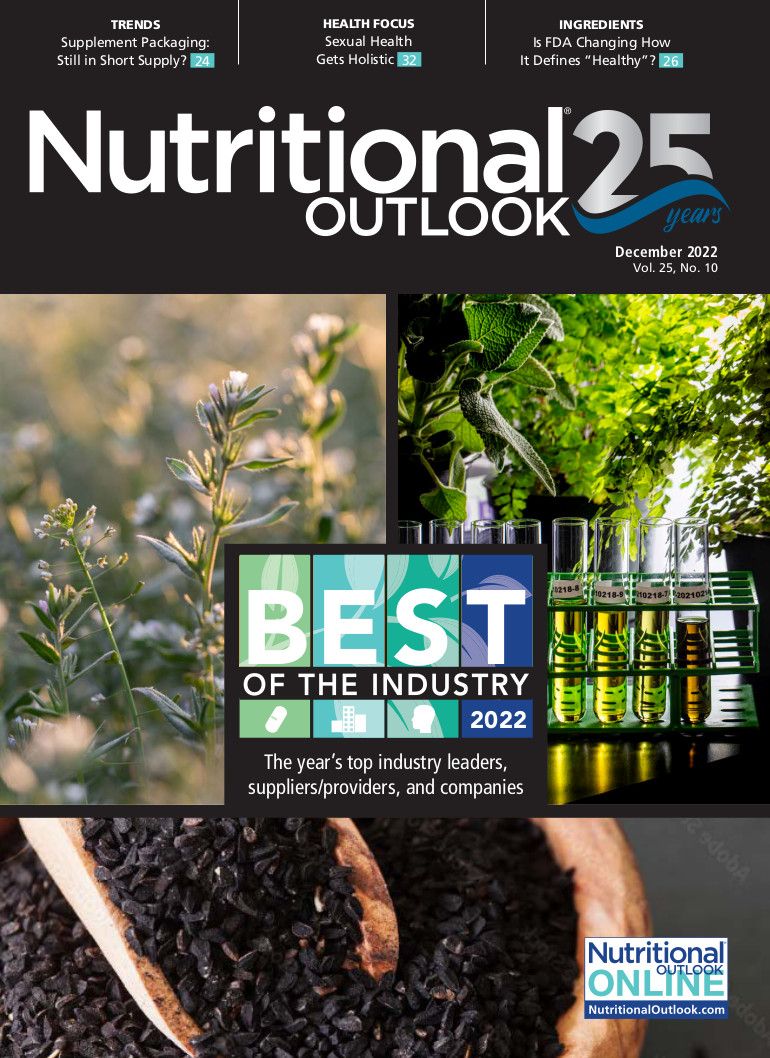Nutritional Outlook’s 2022 Best of the Industry Awards, Industry Leader: Brightseed
Brightseed’s innovative AI platform, Forager, is unlocking the potential of plant bioactives while also accelerating research and development of novel ingredients.
Photo from Brightseed

The concept of artificial intelligence (AI) can conjure all kinds of associations influenced by decades of inventive science fiction, but in reality, it’s just an innovative new tool that, when applied to the right goals, can have a genuinely positive impact. Case in point is San Francisco, CA–based Brightseed, Nutritional Outlook’s pick for our 2022 Best of the Industry Awards Industry Leader.
Brightseed, an AI-driven data and bioscience company, uses its AI platform, Forager, to find new bioactive compounds that have the potential to support human health. With Forager, Brightseed can significantly speed up the research and development process to create innovative and scientifically validated nutraceutical products while also contributing new insights into human health and nutrition.
Machine Learning
Put simply, Forager accomplishes this by drawing connections between compounds found in plants and their potential biological mechanisms, based on clinical evidence. “Forager comprises three main modules,” explains Jim Flatt, co-founder and CEO of Brightseed. “The first module enables identification of the 99% of ‘dark matter,’ the small molecule compounds in plants that have not yet been characterized. The second module is a digital model of human health that enables the prediction of compounds that will beneficially modulate clinically validated biological mechanisms that are determinants of various health conditions. The third module enables prediction of the best plant sources capable of producing novel bioactive compounds of interest.”
The third module is informed by research conducted by Brightseed’s co-founder and chief technology officer, Lee Chae, at Stanford University’s Carnegie Institution for Science’s Department of Plant Biology. According to Chae, “Forager makes these connections by offering a deeper and broader view into the chemical composition of plants as well as a mechanistic prediction of how they act in the human body.”
It is this level of this insight that allows Brightseed to form testable hypotheses about how certain bioactives will impact specific pathways and receptors in the body that lead to specific health benefits, Chae explains. From there, Brightseed can design and interpret nutritional trials with greater speed and accuracy. “As Forager’s data sets grow, we are traversing molecules and new chemical landscapes that have long gone unexplored,” he adds. “Machine learning enables this bioactive data collection and discovery at a pace, depth, and scale that were previously unachievable.”
According to Brightseed’s calculations, only about 1% of potential bioactives have been studied scientifically, but its work with Forager has increased this number exponentially into tens of thousands of predicted bioactives, claims Chae. “This large-scale mapping increases our speed and likelihood of success translating a discovery into a commercial product,” he explains. “We were able to discover, translate, develop, and commercialize our bioactive product in less than five years, compared to the typical 8-10 years it takes to develop and commercialize a new ingredient. We did this all while building our young company. We hope in the future we can further speed up our pipeline to reduce this time to 3-4 years per discovery.”
New Discoveries and Novel Ingredients
The bioactive Chae is referring to is Brightseed Bio 01. This is the first ingredient developed and commercialized by Brightseed that is based on Forager’s discovery of two novel bioactives: N-trans-caffeoyltyramine (NCT) and N-trans-feruloyltyramine (NFT). Forager found these compounds in over 80 common edible plant sources, with the greatest abundance in hemp seed hulls. Preclinical data confirmed that NCT and NFT act as potent HNF4-alpha activators to support proper liver and metabolic function, as well as a healthy gut barrier lining. Now, Brightseed Bio 01, introduced to the market this fall, is being marketed as a novel dietary hemp fiber ideally suited for functional food and beverage products. The company has partnered with Puris (Minneapolis) to create a product prototype called BioCrisp+, which combines Bio 01 with Puris pea protein to create a crunchy product for inclusion in cereals, bars, and baked goods.
Photo from Brightseed

One can view Brightseed Bio 01 as a proof of concept of both Brightseed’s Forager technology as well as its manufacturing and commercialization capabilities. For Brightseed, this is only the beginning. The company recently closed a $68 million Series B funding round for a total of $120 million in capital which Brightseed will use to expand its R&D and commercialization efforts. On top of this, Brightseed has ongoing partnerships with numerous brands that see the potential of the Forager platform for new product development, including the likes of Danone, Pharmavite, and Ocean Spray. Outside of the growth and success of the company, Brightseed’s founders also recognize the larger implications of its Forager platform to benefit mankind.
Big Picture
In a recent article Flatt wrote for the World Economic Forum, ahead of the White House Conference on Hunger, Nutrition, and Health, he proposed that bioactive compounds found in nature are the most potent tool for transforming nutrition as part of a public health initiative. As Americans fall short of daily fruit and vegetable intake requirements, fueling chronic disease on a massive scale, “it’s not an exaggeration to say that unlocking more bioactives and mapping their effects on our biological systems has a seismic and global potential to transform human health,” wrote Flatt. With tools like Forager, this knowledge can be accelerated for rapid development of solutions.
“There is a global opportunity to accelerate clinical studies on known and newly discovered bioactives to expand the breadth of scientific knowledge, which in turn will accelerate government and industry adoption of these evidence-based natural solutions for consumers,” says Sofia Elizondo, Brightseed’s co-founder and COO. “Bioactives need to be included in an expanding definition of what the FDA considers ‘healthy’ and regulated so consumers can benefit from them, and industry can innovate with them.”
For Brightseed, applying Forager’s insights on a larger scale with partners in the food and health industries means more widespread adoption of previously unknown bioactives as resulting new dietary ingredients and drugs hit the marketplace. “We firmly believe that bioactives should be acknowledged as a key element for maintaining, supporting, and restoring human health, and Brightseed’s work is paving the way towards that future,” says Elizondo.
Photo from Brightseed

The work continues. With production and commercialization of Bio 01 underway, Forager continues to crunch its numbers. Chae tells Nutritional Outlook that there is currently a pipeline of more than a dozen discovery programs through which Brightseed is working to identify bioactives across numerous health areas, including cognitive, metabolic, digestive, and immune health.
“Our pipeline of novel bioactive ingredients plans to address some of the most pressing and unmet consumer health conditions including metabolism, weight management, glucose management, cognitive health, sleep, stress, and more,” says Elizondo. “By focusing on these key health areas, we hope to provide ingredients that are an integral part of full-body, proactive health.”

Kaneka Nutrients to unveil new consumer research on menopausal women at Vitafoods Europe 2024
April 26th 2024The company will reveal the results of the research that is based on live feedback from 200 menopausal women who took 200 mg per day of Kaneka Ubiquinol over two-months, monitored the effects, and recorded their observations.
Rousselot to showcase new collagen peptide research and targeted solutions at Vitafoods Europe 2024
April 25th 2024The company will be highlighting new research that demonstrates the ability of its Peptan collagen peptide brand to support sleep quality, reduce gastrointestinal discomfort, and enhance skin health, including density, hydration, and elasticity.